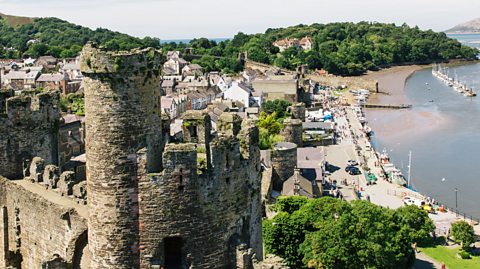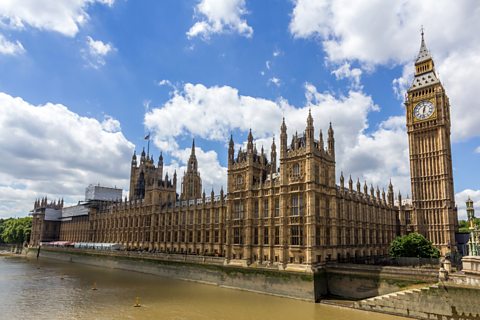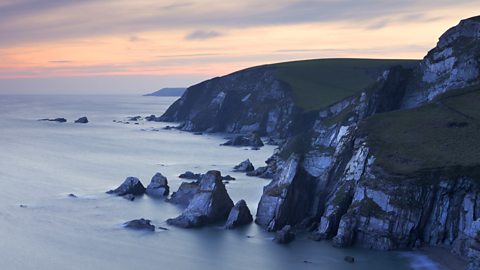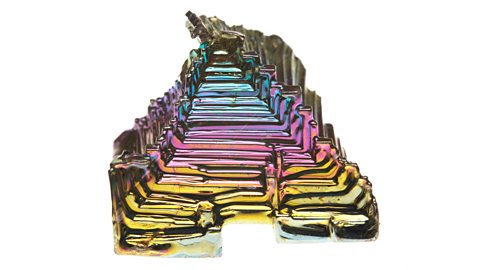The UK rocks - in many ways. But do you know the rocks it's made of?
The stone on which Edinburgh was built is very different from that in Conwy. Dig beneath Yorkshire and you won’t find the same materials that form London’s foundations.
There is a rich and varied seam of geology running from the country's tip to toe - but how much do you know about it? Try our quiz and find out.
If all that geological quizzing has left you keen to find out what else Britain is made of, these landmarks may also catch your eye.
Candy cliffs of limestone and chalk
Trips to the seaside are also a handy way of brushing up on your local geology. Hunstanton Cliffs in Norfolk have earned the nickname Candy Cliffs due to their distinctive red and white horizontal stripe, caused by contrasting layers of red and white chalk - a type of limestone. The red stripe is coloured by iron pigments. The larger, brown base of the cliffs is carstone-sandstone, a mixture of sandstone and pebbly sandstone.

Conwy's rhyolite
The town walls of Conwy in North Wales are the perfect place to spot a rock called rhyolite. An igneous rock, it is formed from an explosive type of lava. It can be best seen in the upper sections of the eastern walls.

Permian limestone in London
Cities can also be a source of geological interest. Permian limestone is found in the north east of England and refers to the Permian period in geology, which started almost 300 million years ago and itself lasted 47 million years. It’s also a well travelled rock - Permian limestone was used to build the Houses of Parliament.

To find out more about what the UK is made of, take a look at our Bitesize guide.
UK landscapes
Learn about other rock formations that have shaped the United Kingdom here.

The most weird and wonderful elements in the periodic table
Which element was used to create a reusable laxative? Find out here.

The science of superheroes
How scientifically possible are your favourite superhero's powers?
